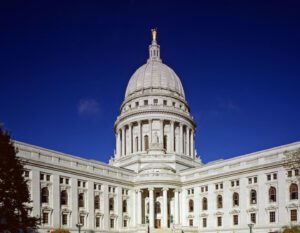Unions compel empty schools to remain open amid declining enrollment, financial troubles
Teachers’ unions are forcing empty schools to remain open after pushing to keep them closed during the pandemic.
Classrooms in many schools are empty or partially-filled, as declining…

Teachers’ unions are forcing empty schools to remain open after pushing to keep them closed during the pandemic.
Classrooms in many schools are empty or partially-filled, as declining enrollment combined with the effects of school closures, have created a financial crisis that will force districts to keep paying for empty buildings.
For example, in January 2023, the Oakland Education Association forced the Oakland Unified School District (OUSD) to scrap plans to close down 11 schools which operate at a loss, according to The Oaklandside.
The union used local protests, rallies and even a nearly-three week hunger strike to force the board to change closure plans.
“When I go to schools in this district, I constantly hear there’s not enough staff and people are paid too little,” OUSD board member Sam Davis told The Oaklandside. “It’s an ongoing crisis and that’s the fiscal crisis that we face.”
In Denver, the National Education Association credited the Denver Classroom Teachers Association with helping the city’s public school system reverse a decision by the previous board to close schools with declining enrollment and low test scores.
School choice in Denver, particularly in the form of open enrollment policies, has rewarded good schools with more students, while enticing students from poor performing schools.
For example, four elementary schools had more than 600 students last year, according to state data provided by Chalkbeat, while 36 elementary or K-8 schools had fewer than 300 students.
Denver Public schools faces a budget shortfall of nearly $9 million and proposed to reduce the number of elementary schools from 40 to 25 to ensure every school has at least 300 pupils, said Chalkbeat.
The cases in Denver and Oakland aren’t isolated, either. Other districts around the country have seen similar outcomes, with declining public school enrollments forcing school closures.
And Salt Lake City, San Antonio and Rochester, New York are all considering proposals to shutter schools over declining enrollment.
The San Antonio Independent School District board (SAISD) just voted to close 15 schools, but the closures are far fewer than needed to stave off bankruptcy.
“We should be closing 50 schools,” SAISD’s Superintendent Jaime Aquino said, according to Axios. “We’re not doing that.”
That’s because spirited opposition to proposed closures was put up by a local group that is a front for the San Antonio Alliance, the union that represents SAISD teachers and staff.
The union chief, Alejandra Lopez, said that the closures would inordinately affect “black and brown” students, calling the plan “inequitable.”
Equity should be seen “through an intersectional lens that takes into account the various ways that our communities have been affected through institutional, historic and systemic oppression,” she said, according to Texas Public Radio.
But even in places where the union and bureaucrats seem cooperative with school closures, it’s a reflection of how dependent the education bureaucracy is on the local teachers’ unions.
In Salt Lake City, the school board announced that it was studying a proposal to close schools, citing declining enrollment that is over 50% lower than in the 1960s.
But the Salt Lake Education Association has said they will only go along with closures if they don’t force a reduction in the number of teachers and staff members.
Similarly, when the Rochester City School District (RCSD) proposed closing 11 schools in September to deal with declining enrollment, the local union chief, Adam Urbanski, signaled hesitation.
“We need to do it right rather than right away,” Urbanski said, according to local WHAM News 13. “We need to do this together, and I think we can do this in a way that is right for kids and right for teachers.”
While the proposal to close all 11 schools was ultimately approved by the board, all the details of exactly how it will be accomplished remain sparse.
“What we have to do now is get into the implementation of this and it will answer a lot of the questions that they (board members) have,” said RCSD Superintendent Carmine Peluso about the board’s vote to approve a plan that apparently was negotiated by the superintendent and the union.
Why those questions couldn’t have been answered prior to the elected board’s vote to approve the plan is unclear, supporting critics’ arguments that education bureaucracy is harming outcomes.
The results, critics also say, have been devastating for kids, and ultimately for the country, with one analyst estimating that learning losses from the pandemic could cost the economy nearly $188 billion annually.
Compounded over 25 years at normal GDP growth rates of 3%, that means the economy would lose nearly $7 trillion over the period just because of union-influenced and pandemic-created learning loss.



